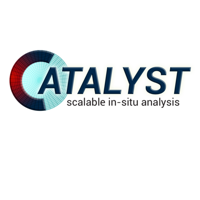As supercomputing moves towards exascale, scientists, engineers and medical researchers will look for efficient and cost effective ways to enable data analysis and visualization for the products of their computational efforts. The ‘exa’ metric prefix stands for quintillion, and the proposed exascale computers would approximately perform as many operations per second as 50 million laptops. Clearly, typical spatial and temporal data reduction techniques employed for post processing will not yield desirable results where reductions of 10e3, 10e6, or 10e9 may still produce petabytes, terabytes or gigabytes of data to transfer or store. Since transferring or storing data may no longer be viable for many simulation applications, data analysis and visualization must now be performed in situ. ParaView Catalyst is an open-source data analysis and visualization library, which aims to reduce IO by tightly coupling simulation, data analysis and visualization codes. This tutorial presented the architecture of ParaView Catalyst and the fundamentals of in situ data analysis and visualization. Attendees learned the basics of using ParaView Catalyst with hands-on exercises. The tutorial featured detailed guidance in implementing C++, Fortran and Python examples. Attendees installed a VirtualBox image from the ‘Download File’ link below for demonstrations and the exercises.
